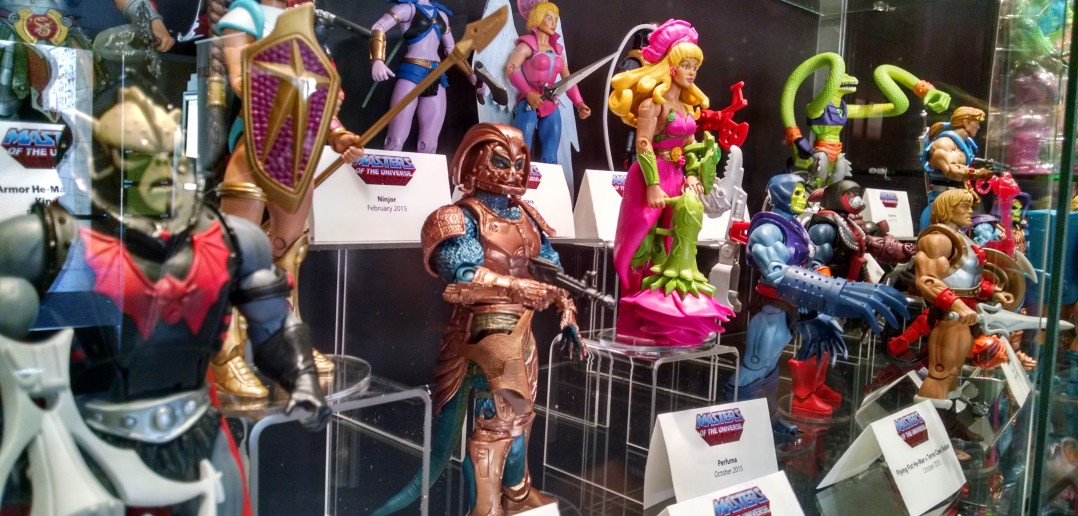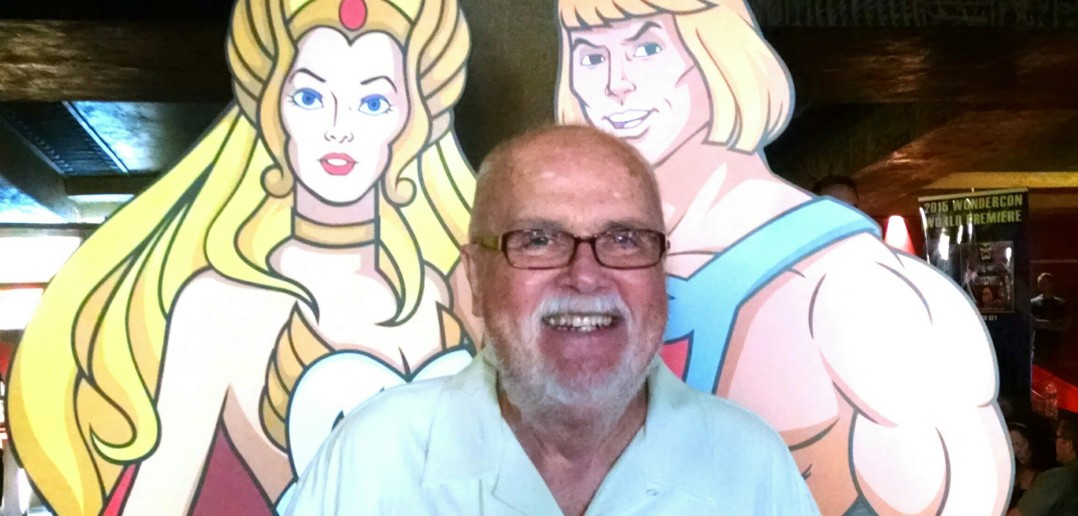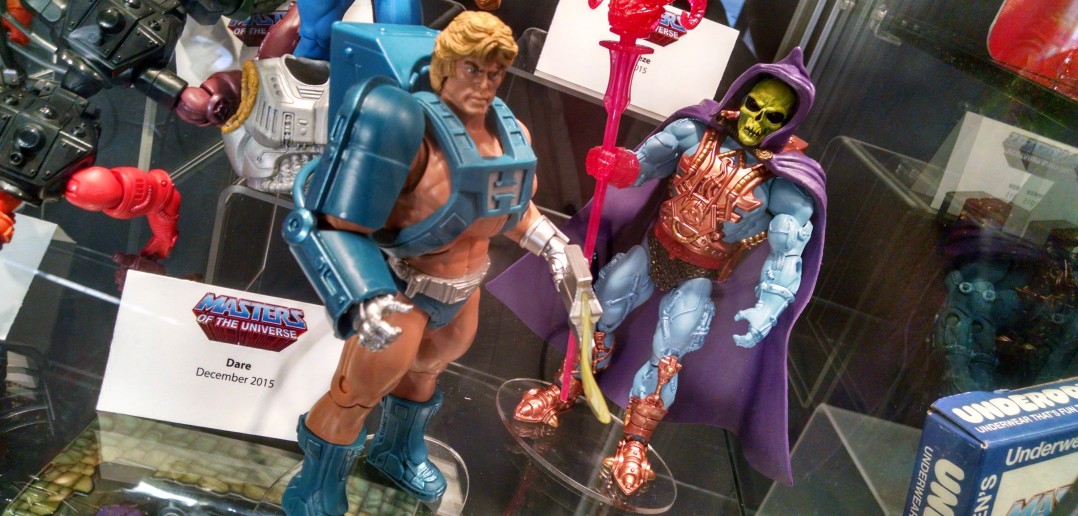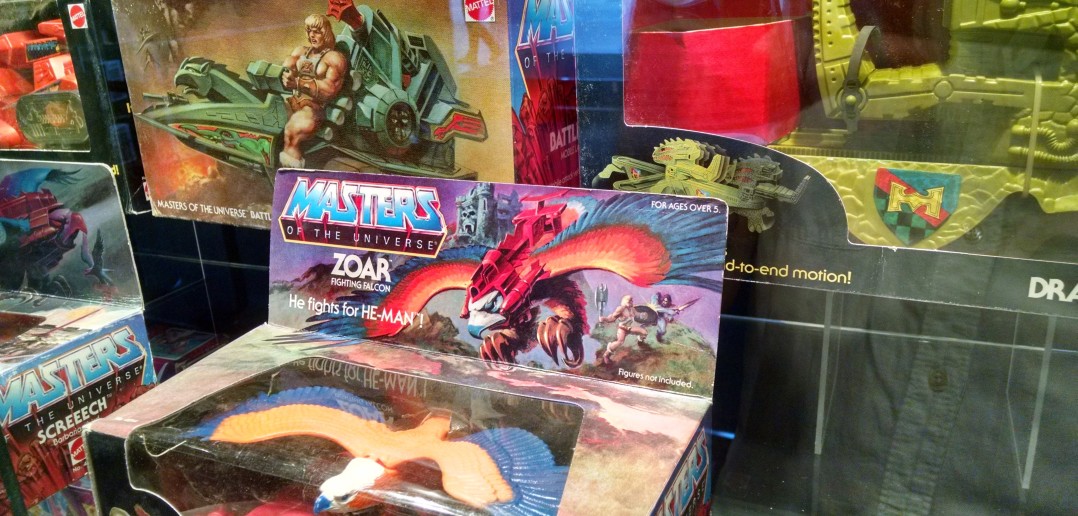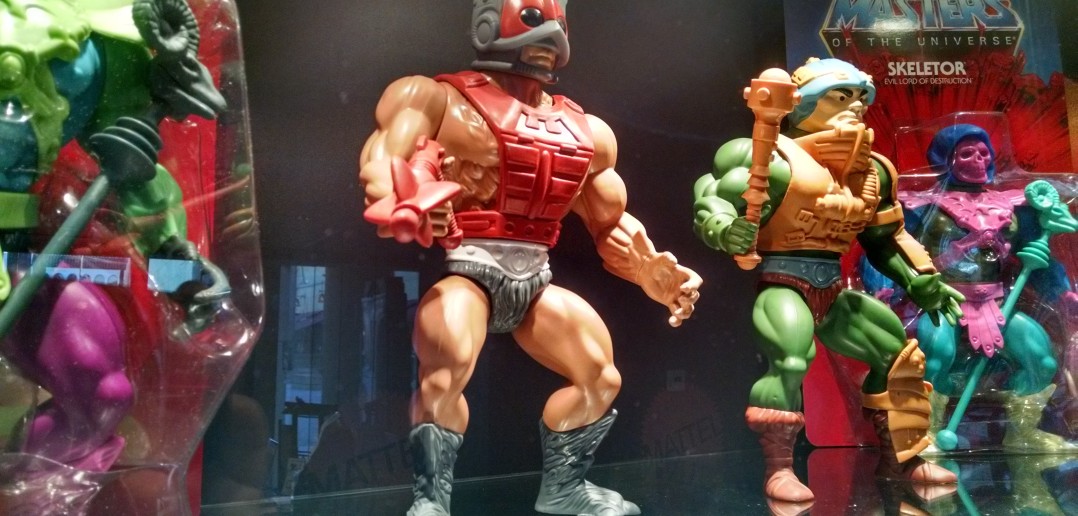10 Things We Learned From Mark Taylor, the Designer of He-Man
For more than 35 years, the battle over who created He-Man has raged like a bloody war between the forces of Skeletor and the citizens of Eternia. On one side there’s Preliminary Designer (and universally acknowledged oddball) Roger Sweet, who stuck some clay on a Big Jim action figure in 1980 and called it a prototype. Then there’s Development Designer Mark Taylor, whose detailed character sketches clearly illustrate the toys we’ve come to know and love. At a recent Masters of the Universe convention in Hollywood, I spoke with Taylor about the iconic action figures he designed, and about the controversy surrounding the birth of his most famous creation.
1. Jockeying for Position
Robot’s Voice: You designed many of the most popular characters in the original Masters of the Universe series. Which of them went through the most changes from the first sketch to the final product?
Mark Taylor: He-Man went through the most changes. It’s like when you throw out a keyword and everyone has their own idea of how it should be. Keep in mind, the producers of Conan the Barbarian had filed a lawsuit against Mattel, because Mattel used the same designer on the Conan project that they used on the He-Man project. And do you know who that designer was?
RV: No, who?
MT: Me! (laughs) One day Mattel’s legal team called me in and said “We need you to prove that you worked on one project and someone else worked on the other.” Now I was a very hard worker. I still am. I can almost design with both hands simultaneously. So I said to the head of Mattel’s legal department, “Well that’s not true. I did both.” One of the excuses that Mattel used to bail on the Conan project was that the movie was R-rated, and they couldn’t make toys for an R-rated property. So the Conan people said “We’re gonna sue your ass!” And they did.
RV: When you were working on He-Man, what were the production meetings like?
MT: I’ve always believed that the best product meetings are exactly like what you and I are doing right now. I used to tell my team that the real breakthroughs take place when you’re walking from one board room to another. The moment we’d get in there it was all just posturing. Suddenly everyone’s jockeying for position and control. But when you and I are talking like this, that’s when the big ideas develop. By the way, George Lucas feels exactly the same way. He’s a very casual kind of guy. He’d come to meetings in his pickup truck! And it wasn’t just for show, either. He’s the real deal. A good old boy from Modesto, California.
2. The Hair Club for He-Man
RV: Looking at your early design sketches, we can see He-Man’s hair went through a lot of changes. Can you talk about that?
MT: The main problem with his hair was that it had to be molded. When I was first working on the figure, I wanted to do real hair! I wanted He-Man, and the entire line of Masters of the Universe toys, to be bigger and to have real hair. You know, like hair-plugs. That way we could turn their hair into tentacles and stuff like that! My imagination was on fire back then. I suggested that we make He-Man look like a biker! They’re the real barbarians of the modern world! But by that time Jill had taken over the company, and she said “No.”
RV: Jill?
MT: Jill Barad. She’s a piece of work. When she made me Senior Vice President, the security people came in to my office and physically removed the drawing table. They said that Jill ordered them to do it. So when I called her up and asked her why, she said “We don’t pay Senior Vice Presidents to draw.”
RV: Why was the table so important to you?
MT: Because I envisioned things by drawing them! I told her that.
RV: What was her response?
MT: She repeated “We don’t pay you to draw,” and hung up. And that’s the kind of person she was. A jerk and a thief. She left Mattel with a $55 million dollar handshake. That makes Hewlett Packard look pretty good!
3. A Variety of Influences
RV: I’m a huge fan of the classic Universal horror films, and of monsters in general, so one of my favorite characters you created was Mer-Man.
MT: You’re the only person who liked Mer-Man! (laughs)
RV: I really did! He reminded me of the Creature from the Black Lagoon. Beast-Man had some echoes of The Island of Doctor Moreau, as well. Were those references intentional?
MT: Absolutely! Are you kidding? As a child, I collected pop bottles and sold them to go see matinees of all those films. I lived for that stuff! For comic books and movies. And I drew them all. It was probably because my home life sucked.
RV: So drawing was a form of therapy?
MT: Yes, and a way to escape. You’ll find that almost all artists have a similar story.
RV: One of the most popular characters you designed was Man-At-Arms. His armor in particular was visually fascinating. Where did that imagery comes from?
MT: I based it on the Spanish Conquistadors. I always wondered how those suckers had the nerve to do the things they did. They had to be ballsy beyond belief! Mattel’s marketing team was really on me to incorporate lots of technology, since Star Wars was still so popular. So I told them I could put high-tech gear on Man-At-Arms. I’d just read Piers Anthony’s classic science-fiction novel Sos the Rope, about a character who goes into a wasteland where a superior civilization had once lived. And he digs down and brings out their technology, which gives him a huge advantage over everyone else! So Man-At-Arms does that too.
RV: It’s interesting to me that Man-At-Arms never used any magic in his battles.
MT: That’s because heroes can’t use magic! It weakens them, in a way. Villains, on the other hand, can use magic whenever they want a shortcut. It’s the Faust story, basically.
RV: Getting back to the Conquistadors for a moment, did you do a lot of research on their armor and weaponry?
MT: I’m not kidding when I tell you that I’d been researching this stuff since 1953, when I was a kid. I had stacks of sketchbooks piled up to the ceiling, filled with historical drawings! That’s what I did. It was either that or let my father belittle me.
4. Testing the Product
RV: When you were designing the Masters of the Universe toys, how important was the idea of play and functionality?
MT: Oh, you’ve gotta think about that. It’s so important. I was adamant that kids had to be able to play with these figures in their living room or bedroom. It wasn’t an outdoor toy. The same thing was true with the way the figures stood. I wanted them to have a wide comic book stance! You know, with their legs far apart, so they’d be easy to stand. And we tested them relentlessly. Believe me, it was hard to design that wide stance. Now, Kenner’s Star Wars figures had a very narrow stance. But I insisted that the Masters of the Universe figures had to have a comic book stance.
RV: Did Mattel put this much thought into all of their toys?
MT: They certainly weren’t doing it with Barbie, that’s for sure! Way back before the Bratz dolls hit the market, I saw a Mattel designer suggest that if they just took Barbie’s small shoes off and put on slightly wider shoes the dolls could stand more easily. And the marketing people said “We’ll never do that.” I was in the meeting when they said that! Then there was the issue with putting panties on them.
RV: Panties?
MT: On Barbie. They wouldn’t put panties on her! It was a big discussion. Eventually they decided to put the panties in the mold. That way there would be a bit of texture and they’d just paint them on later.
RV: What was the problem with using fabric panties?
MT: The marketers said it would be obscene. I sat there thinking “This is surreal!” After that, I couldn’t wait to get back to boys’ toys.
RV: Are there any characters you designed that you think the sculptors handled particularly well?
MT: As long as my friend Rudy Guerrero was sculpting them, they were all perfect. The Castle Grayskull playset was really difficult, though. I had to do that myself, because the engineers kept trying to put straight sides on it. But I wanted it to feel organic! Like it was alive! In the world of He-Man, Castle Grayskull really is an entity, not just a structure. And the engineers kept trying to design it with straight angles to make the tooling easier. They made two prototypes, and they were both horrible. It needed to be organic, so that when kids opened it up they weren’t sure if the walls were alive or not. I purposefully designed it that way. Also, the executives said we couldn’t include any details inside the playset because it had to retail for $29, and those details would’ve been too costly.
RV: That’s interesting that you mentioned the word organic to describe Castle Grayskull, since your earliest sketches of it have a surreal, painterly quality to them. There’s one in particular called “The Dwell of Souls” that’s especially striking.
MT: Thank you very much!
RV: When I compare that dream-like style to your detailed character designs, it really shows how versatile your work is. Do you have a personal preference between those two styles?
MT: I’m a graduate of Art Center, and I did my Master’s at Cal State. For my Master’s show, they made me write about how I did every drawing and painting, which I took umbrage at because nobody else had to explain their work! But they said that my work looked like it had all been done at different times by different people. The truth is, my drawings change depending on the mood I’m in. Sometimes I’m angry. Sometimes I’m sad. It affects the way I draw even to this day. The idea that a toy designer might translate his emotions into his work probably sounds alien to some people… but I’m old, so that’s okay!

